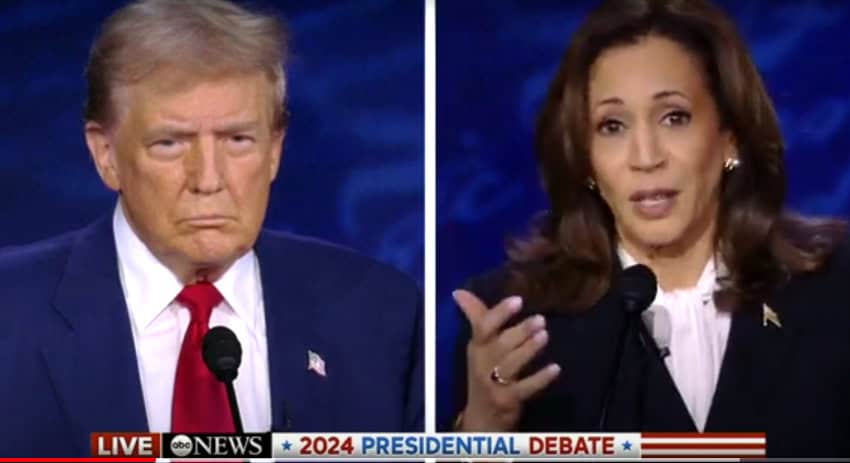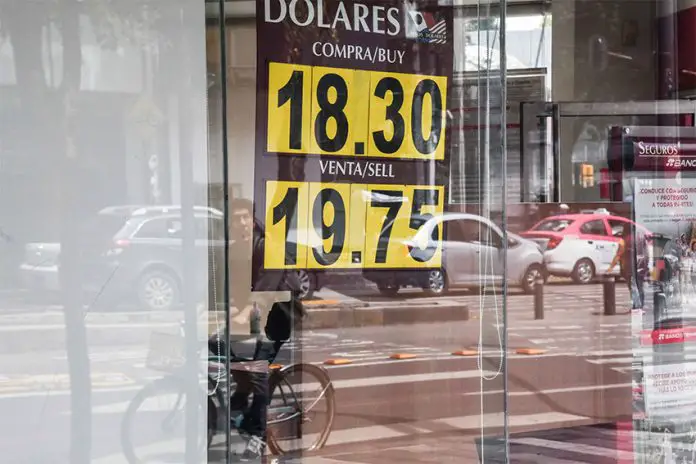After slipping to over 20 to the US dollar early this week ahead of the Senate approval of the federal government’s judicial reform bill, the Mexican peso has appreciated against the greenback for two consecutive days, trading at 19.52 as of 3 p.m. Mexico City time on Thursday.
The peso closed at 19.79 to the US dollar on Wednesday.
Early Thursday morning, the peso led 16 major global currencies in appreciation against the US dollar, according to Bloomberg.
The peso’s recovery has been mostly attributed to a weakening US dollar following the publication of both inflation and employment data this week, as well as the presidential debate between Kamala Harris and Donald Trump.
Consumer inflation declined to 2.5% in the United States in August, a three-year low, but there was an uptick in core inflation. On Thursday morning, the U.S. Department of Labor also reported that initial jobless claims had increased for the week ending Sept. 7.
The U.S. Federal Reserve is widely expected to cut its benchmark rate — which has been held at 5.25%-5.5% since July 2023 — at its meeting next week.

“These reports suggest that the U.S. labor market remains resilient despite economic headwinds, while inflation pressures may be moderating, supporting the Fed’s dovish stance,” reported foreign exchange news website FX Street on Thursday morning.
The European Central Bank also announced an interest rate cut from 3.75% to 3.5% on Thursday morning, its second cut in three months.
The gap between official interest rates in the U.S. and Mexico had previously contributed to strong performance by the peso, which reached a nine-year high when it traded at 16.30 to the US dollar in April.
The Bank of Mexico has cut its key rate twice so far this year, reducing it to 10.75% in August after a divided vote. Mexico’s annual headline inflation rate dropped to 4.99% last month, declining for the first time in six months. The central bank will hold its next monetary policy meeting on Sept. 26.

The peso has depreciated over 15% since Claudia Sheinbaum won the presidency, and the Morena party coalition won majorities in both houses of Congress on June 2, and has experienced further volatility in recent weeks as the new legislature took office and moved quickly to approve an overhaul of the federal judiciary.
The judicial reform is one of a package of constitutional reform proposals that President Andrés Manuel López Obrador presented earlier this year, and has been broadly criticized — including by U.S. Ambassador Ken Salazar and representatives of U.S. businesses in Mexico who assert it will negatively affect investment and economic stability.
Gabriela Siller, chief economic analyst at Banco Base, posted to X on Wednesday that it was a “sad day for Mexico” after the approval of the reform. “It is very possible, with the judicial reform, that the Mexican economy will descend into a long stagnation.”
“It could be that negative sentiment has reached its ceiling,” said a note by Citi analysts quoted by Bloomberg in a Wednesday report. “While there is broad consensus on the negative impact of the reforms on the quality of democratic institutions, it has been harder for the markets to quantify its impact.”
President López Obrador and Sheinbaum have both defended the reform bill and have minimized the impact it could have on foreign direct investment and Mexico’s economic growth.
“I don’t see any reason to think there will be an impact on investments,” said Marcelo Ebrard — the incoming Economy Minister in Sheinbaum’s cabinet — at an event on Wednesday.
“I actually believe the opposite will happen. I think that in the coming years, Mexico’s economic integration with its main trading partners will grow.”
With reports from Bloomberg Línea, El Financiero, FX Street and AP
